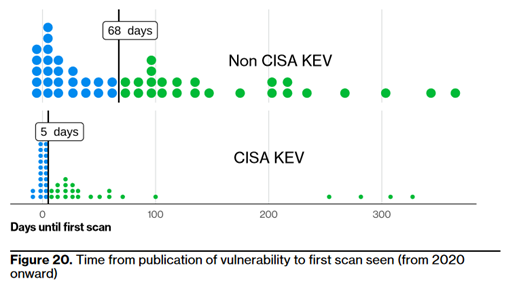The story of cybersecurity involves bad actors and security professionals constantly trying to thwart each other, often using newer and more advanced measures in an attempt to outdo each other. In recent years, especially, cybercriminals have evolved to include sophisticated technology and advanced tactics in their attacks. With the increasing popularity of tools and practices like artificial intelligence and machine learning (AI/ML), cloud technology, and remote and hybrid working environments, many of the age-old security solutions are no longer sufficient to prevent attacks.
Many high-profile and high-impact cyberattacks, such as the recent Ticketmaster and AT&T breaches, are designed primarily to compromise sensitive and confidential data. Protecting against these attacks is vital for any organization's security, but the length of time between when compromise occurs and when the threat is detected can be over 300 days, according to Verizon's 2024 Data Breach Investigations Report. Remediation is far more costly than prevention, so early detection of these threats is key.

What is an Indicator of Compromise?
One tactic that malicious actors commonly employ is concealing malware within seemingly safe patches and updates. These exploits pose a significant threat, as they can severely compromise an organization's network without setting off any red flags, which in turn increases the gap in the time that elapses between a network compromise and the detection of said intrusion. Given the evolving threat landscape, it is more important than ever for security professionals to be able to protect their organizations' networks against concealed threats.
Much of this ability rests with detecting data compromises based upon surrounding activity and behavior that may be attributed to a threat actor. Forensic data that can be used to identify potential malicious activities are referred to as Indicators of Compromise (IoC). Common IoC examples include:
- Abnormal outbound network traffic: unusual traffic leaving the network may indicate data exfiltration or other suspicious activity.
- Anomalous user activity: behavior from users that differs from their usual activity, especially from privileged accounts.
- Log-in irregularities and failures: many log-in attempts in a short time, and other log-in red flags that may indicate an unauthorized user attempting to gain access to the network.
- Increased database read volume: bad actors who successfully infiltrate an organization's network often attempt to access or extract large volumes of data.
- Data in the wrong location: large volumes of data in places on the network where it should not exist, especially compressed files, often indicate a system intrusion.
- Many requests for the same sensitive data: a large number of requests in a short period of time may indicate that an attacker is using trial and error to gain access to sensitive areas.
With these and other signs, organizations can identify activity that may indicate an external attack, malicious insider threat, or inadvertent threat behavior. With analysis of both technical and non-technical indicators in the form of forensic data and user behavior, many potentially catastrophic data leaks and breaches can be detected and prevented.
Detecting Indicators of Compromise
As attacks become more sophisticated and more difficult to identify using methods like detecting known threat signatures, organizations are increasingly turning to threat intelligence programs that analyze Indicators of Compromise. Identifying and analyzing potentially harmful behavior and forensic data allows organizations to more easily detect and prevent network intrusions and data compromises.
In addition to looking at IoC, many organizations are employing solutions such as TAXII, STIX, and CybOX to facilitate the sharing of threat intelligence across and between organizations. These tools enable the "automated exchange of cyber threat information," providing organizations with the opportunity to refer to a standardized format for sharing crucial threat intelligence.
One shortcoming that remains with the use of Indicators of Compromise and information sharing is that human analysts still need to consume any threat intelligence that is received and then decide what to do with it. Automating this part of the process when possible is the easiest way to cut down on the amount of time and effort dedicated to threat detection.
Active Threat Intelligence for IoC
This is where active threat intelligence solutions such as Tripwire Enterprise come in. Via integrations with threat intelligence partners, Tripwire Enterprise can receive manual and automated threat feeds as part of a number of different intelligence transport configurations, including TAXII servers and sandbox threat analytics.
Additionally, features that enable organizations to build detection rules and to scan for different hash types ensures maximum customization. This provides for better up-to-date threat intelligence that can be used to record, quarantine, and delete suspicious files.
Most organizations these days understand the grave threat posed by data compromises and breaches, but the sophistication of threats confronting enterprises today means that security is not as simple as anti-phishing security campaigns. Security personnel need to be able to stay on top of what is coming into an organization's network using forensic data like Indicators of Compromise.
To efficiently process and analyze all of the relevant data, organizations are encouraged to employ threat intelligence solutions that actively and continuously scan networks for Indicators of Compromise. Tripwire offers tools to assister organizations with comprehensive incident detection and analysis, Security Configuration Management (SCM), and integrity monitoring.
Organizations that adopt Tripwire Enterprise for IoC detection benefit from a multi-layered security approach, ensuring they are not only monitoring for known threats but also anticipating emerging risks. In an environment where seconds can make the difference between a minor breach and a catastrophic compromise, Tripwire Enterprise provides the speed and precision necessary to safeguard sensitive data and protect against today's most sophisticated cyber threats.
Learn more about how Tripwire can help your organization detect IoC and prevent breaches here.
5 Things Your FIM Solution Should Be Doing for You
Discover the pivotal role of File Integrity Monitoring in maintaining system security and compliance with major standards. Tripwire Enterprise stands out as an advanced solution, offering real-time detection and detailed context for system changes, making it a superior choice for robust cybersecurity.


